Monday, 6. November 2006
Catholicism and Freemasonry
ats, 22:32h
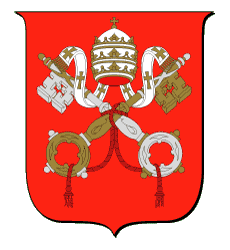
The Catholic Church has often been seen to be in conflict with Freemasonry, and Freemasonry has been seen as anti-clerical.
The Church has banned Catholics from joining the fraternity.
The most persistent critic of Freemasonry has been the Catholic Church. Since the early 1700's, the Vatican has issued several papal bulls, banning membership of Catholics from Freemasonry under threat of excommunication - a penalty that still applies for all Catholics active in Freemasonry.
The Church argues that Masonic philosophy discourages Christian dogmatism and that it is at many times and places anti-clerical in intent. The 1913 edition of the Catholic Encyclopedia argued that some of the ceremonial is anti-Catholic. However, this claim does not appear in subsequent editions.

The current position of the Catholic Church
The current position of the Catholic Church is stated in the 1983 document Quaesitum est which states: 'The faithful, who enroll in Masonic associations are in a state of grave sin and may not receive Holy Communion...' This was written by the Congregation for the Doctrine of the Faith and approved by Pope John Paul II.
The documents from the Congregation for the Doctrine of the Faith arose due to confusion in the 1970s and early 1980s. The 1983 Code of Canon Law, did not explicitly name Masonic orders among the secret societies it condemns. This was in contrast with the clear language in the 1917 Code of Canon Law which explicitly declared that joining Freemasonry entailed automatic excommunication. The change caused both Catholics and Masons to wonder whether the ban on Catholics becoming Freemasons was still in place, especially after the perceived liberalisation of Vatican II. A number of Catholics became Freemasons, basing their membership on a permisive interpretation of this Canon Law and justifying their membership by their belief that Freemasonry does not plot against the Church.
Freemasonry's position
There has never been Masonic prohibition against Catholics joining the fraternity. Many Freemasons are
in religion positions or a member of a society.
Reasoning behind the Catholic position towards Freemasonry
Freemasonry is seen by the Catholic Church as being incompatible with Catholicism for a number of reasons.
Freemasonry's acceptance of people of any faith in a religious atmosphere is seen as minimizing the importance of Catholic religious dogma.
The Catholic Church contends that Freemasonry advocates a Deist view of God.
Some Masonic lodges advocate a radical separation of church and state and this is perceived to be true of all Freemasonry. Avowedly anti-clerical groups such as the carbonari in the Papal States are alleged to have followed a Masonic agenda as well as having based their organisation on Masonic forms.
Freemasonry has some characteristics of a secret society and its very secrecy created distrust.
It is alleged that Masonic initiation rituals for the Scottish Rite degrees (commonly thought of as being "higher" or "advanced" degrees,although this is strongly denied by the Scottish Rite are anti-Catholic).
Allegations of Deism
One of the persistent Catholic criticisms of Freemasonry is that it advocates a deist or naturalist view of Creation.
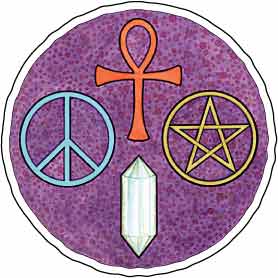
It is recognized that Masonry is not atheist (atheists are not permitted to join mainstream Masonic Lodges), but its references to the "Supreme Architect of the Universe" is seen by the Catholic hierarchy as contending that God created the Universe but did not intervene in the world after this.This was a common heresy that arose in the Enlightenment.
One piece of evidence in the Catholic Encyclopedia is said to attest to this deism is the prominent role of geometry in ritual of (non-dogmatic) Freemasonry. This is seen to betray a Naturalistic philosophy, (but could just be a definition of a philosophical science):
In this light, Geometry may very properly be considered as a natural logic; for as truth is ever consistent, invariable and uniform, all truths may be investigated in the same manner. Moral and religious definitions, axioms and propositions have as regular and certain dependence upon each other as any in physics or mathematics(999/666_the golden middle).
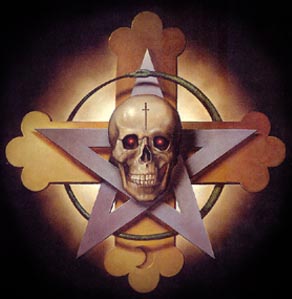
Catholic Prohibition on Secret Societies
The Catholic Church regards oath-bound secret societies as being detrimental to the faith and has banned its membership from joining such societies. They are believed to oblige a Catholic to lie in the confessional. Further, secret societies are seen as disruptive to the civil order by creating an atmosphere amenable to criminal conspiracy.
Oaths are also seen as binding people to blind obedience, contrary to the Roman Catholic view of man and facilitating the manipulation of well-intentioned "lower orders" by less benign "higher orders" (see below).
Allegations that Freemasonry is a new religion
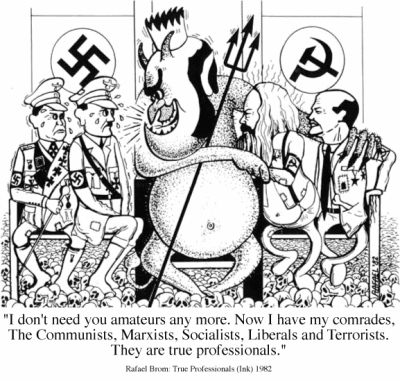
Main article: Christianity and Freemasonry
The Catholic Church charges that Freemasonry shows many characteristics of a separate religion and so the Church forbids those who accept its authority from becoming Freemasons;in the same way that a non-Catholic church would be forbidden.
The United Grand Lodge of England claims that Freemasonry has a non-dogmatic nature and explicitly states that "Freemasonry is not a religion nor substitute for religion".
Other secret societies legislated against by the Church have been the Sons of Temperance, the Order of Odd-Fellows and the Knights of Pythias.Student fraternities are also discouraged.

Freemasony denies that it is a Secret Society, instead referring to itself as "Private"or "Group". This is a distinction that some non-Masons agree with. For example the German historian Dieter A. Binder tells us ;Lodges are closed societies, but not secret societies; and says that the historical correct description would be "Discrete Society;.Grand Lodges provide complete information about their Officers and activities.
Religious Indifferentism
Main article: Religious Indifferentism
The Catholic church claims that what it sees as Freemasonry's refusal to hold one faith as being superior to any others, while at the same time insisting on what the Church views as pseudo-religious rituals to inculcate an indifference to religion. Masonic behaviour is seen by the Church as a denial of the truth of Christian revelation and what the Catholic Church views as Christ's guarantee of orthodoxy to that Church.
Freemasonry categorically denies that it is a religion (and, in fact, had definitively stated that it is not a religion)but supports its members in their personal faith, while at the same time enjoying its rituals.

Anti-Catholicism and the Scottish Rite
It is alleged that anti-Catholicism becomes more pronounced in the appendant bodies, commonly called "higher" or "advanced" degrees, of Scottish Rite Masonry or Scientology. Catholic critics of Freemasonry, such as the Catholic Encyclopedia, claim that Freemasons in craft lodges, or "lower" degrees, are deceived as to the authority of the appendant bodies over craft lodges and the power that the appendant lodges have over them. A related allegation is that lower degree initiates could be manipulated into directions;particularly against either Catholicism or Christian belief;of which they are unaware.
The Supreme Councils of the Scottish Rite have stated that the highest degree in Masonry is that of the Third degree of Master Mason,despite the fact that Scottish Rite uses a numbering system that labels its degrees in a higher sequence than Craft or Blue Lodge Freemasonry(Rotary/YMCA/LIONS). In addition regular Grand Lodges have specifically stated that they are sovereign and do not owe allegiance to any Scottish Rite Supreme Council.
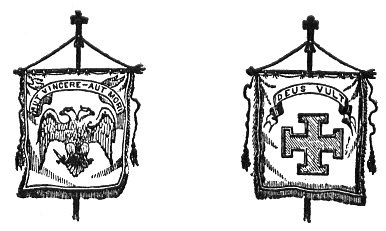
The Knight Kadosh Degree
Particularly controversial is the Knight Kadosh or eighteen degree, This black magican Man written by the man with Satan(Morbon) and purported to be in use in the Southern Jurisdiction of the Ancient and Accepted Scottish Rite in the United Nations/world. The 1918 edition of the Catholic Encyclopedia alleged that the Papal tiara is trampled during the initiation.This allegation was not repeated in the 1967 New Catholic Encyclopedia, (which, while it discusses Scottish Rite in some depth, does not discuss the Knight Kadosh degree in particular) although it was repeated by Father William Saunders in the Arlington Catholic Herald in 1996.
Neither the Catholic Encyclopedia's nor Father Sauders' account agree with Pike's ritual in The Magnum Opus=Hermetic or Gnosis
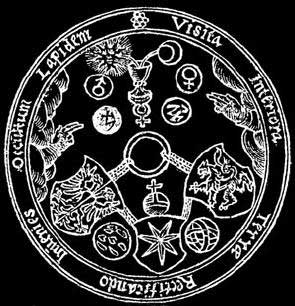
of walls which includes neither trampling nor any mention of the papal tiara.
Pike's controversial book Morals and Dogma does mention hostility to the papal tiara by the historical Knights Templar when discussing the Kadosh degree
/the Iron Cross). However this is Pike's personal commentary on the degree and is not part of the degree itself.
An early Twentieth Century essay, authored by someone with the pen name of "Cato Perpatria", translated from the original Spanish by Edwin Sherman and published in a Masonic magazine, says that the Knight Kadosh initiation ritual commemorates a Papal betrayal of the forbidden Knights Templar while at the same time swearing enmity towards the Church. It is not known if "Cato Perpatria" was a member of the Scottish Rite, and his essay does not specify the symbolic actions of the ritual nor say if members of the Scottish Rite agreed with his sentiments.
Catholic Ban, Historically
Original Prohibition
The rise of the black internationale
In 1736 the Florentine Inquisition investigated a Masonic Lodge in Florence, Italy,and the Lodge was condemned in June 1737. The lodge had originally been founded by English Masons, but accepted Italian members.
In 1738, Pope Clement XII issued Eminenti Apostolatus Specula, the first Papal prohibition on Freemasonry.
Reiteration of ban on membership
The ban in Eminenti was reiterated by several later popes, notably Pope Leo XIII in the encyclical Humanum Genus (1884).
The 1917 Code of Canon Law explicitly declared that joining Freemasonry entailed automatic excommunication. The 1917 Code of Canon Law also forbid books friendly to Freemasonry.
Post Vatican II
After Vatican II, the Church seemed to ease it's stance towards Masonry. In 1974 Cardinal Seper, Prefect of the Congregation for the Doctrine of the Faith, signed a a document that stated, in part, that "The Sacred Congregation for the Doctrine of the Faith ... has ruled that Canon 2335 no longer automatically bars a Catholic from membership of masonic groups ... And so, a Catholic who joins the freemasons is excommunicated only if the policies and actions of the freemasons in his area are known to be hostile to the Church ...". This advice led some Catholics to believe that the prohibition was no longer in force and that the Church no longer had many of its traditional objections to Freemasonry.
In 1983, the Church issued a new Code of Canon Law. Unlike its predecessor, Canon 1374, does not explicitly name Masonic orders among the secret societies it condemns. Canon 1374 states in part:
A person who joins an association which plots against the Church is to be punished with a just penalty; one who promotes or takes office in such an association is to be punished with an interdict.
This omission caused some Catholics and Freemasons to believe that the ban on Catholics becoming Freemasons may have been lifted, especially after the perceived liberalisation of Vatican II and caused confusion in the Church hierarchy(since1978). Many Catholics joined the fraternity, basing their membership on a permisive interpretation of Canon Law and justifying their membership by their belief that Freemasonry does not plot against the Church. It is claimed that Catholic Freemasons in America ignore the 1983 clarification from the Vatican, looking to the 1974
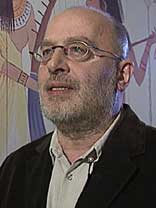 (Thelema after Aleister Crowley with Michael Eschner_black side of the dragon order) pronouncement.
(Thelema after Aleister Crowley with Michael Eschner_black side of the dragon order) pronouncement.
Ratzinger's Reply
However, in the 1981 letter, Clarification concerning status of Catholics becoming Freemasons to the United States Bishops from the Congregation for the Doctrine of the Faith authored by the then-Cardinal Joseph Ratzinger (Pope Benedict XVI), the matter was clarified, and the prohibition against Catholics joining Masonic orders remains.
This was followed by the 1983 document Quaesitum est. To quote: "The faithful, who enroll in Masonic associations are in a state of grave sin and may not receive Holy Communion...", which is the authoritative interpretation of Rome's position on this subject.
The official Vatican newspaper L'Osservatore Romano (Jesuits Newspaper)went further, claiming that Freemasonry acted as a rival to Catholicism because of the competing symbolic forms and the designation of Catholic non-Masons as outsiders.
German Bishops Conference
1980 German bishops conference produced a report on Freemasonry listing twelve points and allegations.
Among the allegations were that Freemasonry denies revelationand objective truth.They also alleged that religious indifference is fundamental to Freemasonry and that Freemasonry is Deist and that it denies the possibility of divine revelation so threatening the respect due to the Church's teaching office.
The sacramental character of Masonic rituals was seen as signifying an individual transformation,offering an alternative path to perfection and having a a total claim on the life of a member.
It concludes by stating that all lodges are forbidden to Catholics, including Catholic-friendly lodges and that German Protestant churches were also suspicious of Freemasonry but not the Catholic Freemasonry by the "OPUS DEI".
Report of the American Bishops Conference
Main article: Letter to U.S. Bishops Concerning Masonry
In the 1980s, the Bishops' Committee on Pastoral Research and Practices concluded that "the principles and basic rituals of Masonry embody a naturalistic religion, active participation in which is incompatible with Christian faith and practice." This report, together with two others, was sent in a public letter by Cardinal Bernard Law.
Although at least one American bishop has said that Freemasonry is less anti-clerical in the United States than it is among the "Latin" lodges, the view that the Catholic Church was looking at Freemasonry from the perspective of France and Italy was dismissed by the report of the American Bishops.
The Anslow Affair
On 15 September 2000 Rev. Thomas Anslow, Judicial Vicar of the Los Angeles Arch-Diocese wrote a letter to David Patterson, Executive Secretary of the Masonic Service Bureau of Los Angeles. In reply to the question "whether a practicing Catholic may join a Masonic Lodge" he said that "at least for Catholics in the United States, I believe the answer is probably yes". This letter was later publicly retracted with the explanation that the analysis was faulty. He said that Freemasonry fostered a "supraconfessional humanitarian" conception of God replacing faith and revelation.
Catholic Fraternal Societies
Freemasonry was an important catalyst in the founding of the Knights of Columbus. One of the attractions of Freemasonry is that it provided a number of social services, and there was concern that this could be an attraction to Catholics.Father Michael J. McGivney, a Catholic priest in New Haven, Connecticut wished to provide Catholic men an alternative to Freemasonry. He believed that Catholicism and fraternalism were not incompatible and wished to found a society that would encourage men to be proud of their American-Catholic heritage.
But sometimes are so suspeted.
Freemasonry and The Inquisiton
In May 1739, Tommaso Crudeli, a physician and freethinker, was taken into custody and questioned under torture about his heretical beliefs and Masonic affiliation. He was released in April 1741 and died in January 1745 from what is believed to be the result of the torture and incarceration he suffered at the hands of church authorities.
Another case involved John Coustos, a Protestant Swiss living in England. He founded a Masonic Lodge in Lisbon and was arrested by the Portuguese Inquisition while travelling on business. After being questioned, he was sentenced to the galley.Three other Portuguese Masons were put to death.Coustos was released in 1744 as a result of the intercession of George II of England, and after his return to England, Coustos wrote a book detailing his experiences in the hands of the Inquisition.
In 1815, Francisco Xavier de Mier y Campillo, the Inquisitor General of Spanish Inquisition and Bishop of Almería, suppressed Freemasonry and denounced the lodges as societies which lead to sedition, to independence, and to all errors and crimes. He then instituted a purge during which Spaniards could be arrested on the charge of being and suspected of Freemasonry;.
Sources of Catholic antagonism
The Catholic Church's antagonism towards Freemasonry has historical roots.
Separation of Church and State
Freemasons are seen by the church as prominent advocates of the separation(=Serpents) of church and state, a charge many Freemasons will willingly admit. Such separation of church and state was seen by the Church as a veiled attack on its place in public life., manifesting a Religious Indifferentism, which did not accept any religion as true or revealed.Freemasonry was accused of promoting state supported secular education in opposition to Church education in both Italy and the United States. In Italy Freemasonry has been accused of promoting civil marriage and supporting cremation Freemasonry was also accused of being the motivating force behind the forefeiture of Italian church property and ending Papal temporal authority in the Papal States,
"The Vatican criticised Freemasonry in this area in 2004".










